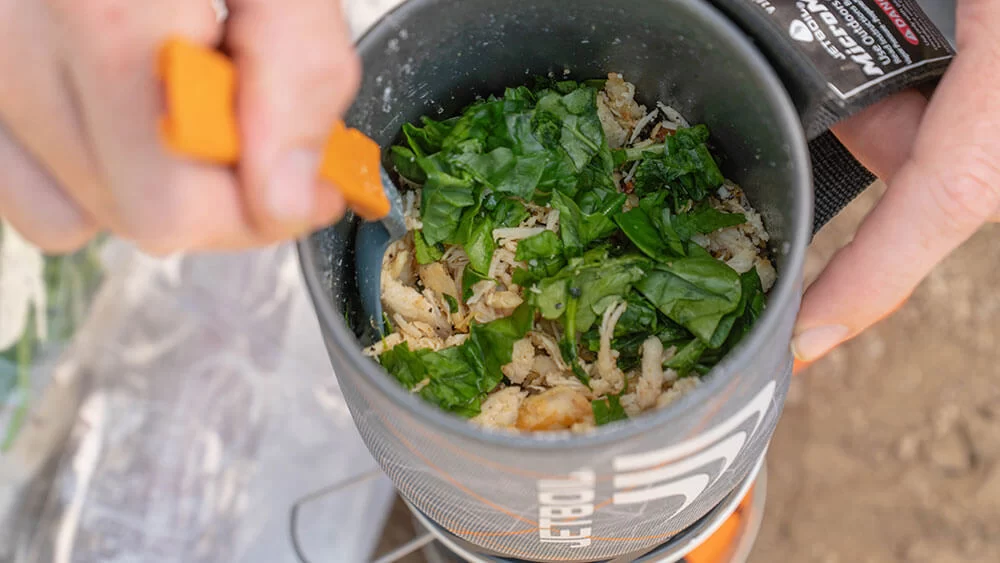- Planning Backpacking Food for USA Trips
- Key Considerations for Backpacking Meals
- Delicious and Nutritious Backpacking Food Ideas
- Real-Life Experiences with Backpacking Food
- Where to Find Quality Backpacking Food Supplies
1. Planning Backpacking Food for USA Trips
Preparing for a backpacking trip in the USA involves more than just packing gear; food planning plays a critical role in ensuring you stay energized and satisfied throughout your journey. Whether trekking through the Appalachian Trail or exploring the deserts of Arizona, choosing the right backpacking food can make or break your experience.
1.1 Understanding Your Trip Duration and Terrain
The first step in planning backpacking meals is assessing how long you’ll be on the trail and the nature of the terrain. Longer trips require more calorie-dense foods, while shorter hikes might prioritize lightweight and quick-to-prepare meals. Rocky or mountainous terrain can demand higher energy intake, which influences the type of food you bring along.
1.2 Balancing Weight, Nutrition, and Taste
Backpacking food needs to strike a balance between being lightweight and nutritionally rich. While freeze-dried meals are popular for their convenience, integrating a mix of fresh and easy-to-carry foods can enhance your overall experience. Taste is equally important — nobody wants to eat boring meals on an adventure!
2. Key Considerations for Backpacking Meals
To maximize your trip’s success, understanding the crucial factors behind meal choices is essential.
2.1 Caloric Needs and Meal Timing
Backpacking requires substantial energy, often burning between 3,000 to 6,000 calories daily depending on activity levels. Planning meals and snacks around these needs ensures you maintain stamina. Consider spreading calorie intake across several smaller meals to avoid fatigue and maintain blood sugar.
2.2 Shelf Life and Storage
Since refrigeration isn’t an option, foods with long shelf lives are a must. Dehydrated, freeze-dried, and vacuum-sealed items help prevent spoilage and reduce pack weight. Understanding storage requirements also helps in packing efficiently to protect food from moisture and pests.
2.3 Ease of Preparation
Meals that require minimal preparation and cleanup are ideal. Instant oats, trail mix, and ready-made freeze-dried meals allow you to spend more time enjoying nature and less time fussing over cooking.
3. Delicious and Nutritious Backpacking Food Ideas
Here are some carefully selected food ideas that balance taste, nutrition, and convenience for your USA backpacking trips.
3.1 Breakfast Options
Starting the day with a hearty meal is key. Instant oatmeal packets mixed with powdered milk and dried fruits provide quick energy. For a savory twist, consider dehydrated eggs or pre-packaged breakfast burritos that just need reheating.
3.2 Lunch and Snack Ideas
Lunches on the trail should be easy to eat and nourishing. Nut butter packets paired with whole grain crackers offer a protein boost. Trail mix combining nuts, seeds, dried berries, and a bit of chocolate is a classic energy-dense snack. Jerky and hard cheeses also provide lasting fuel.
3.3 Dinner Meals
Dinner is where you can enjoy a warm, satisfying meal. Freeze-dried meals like chili, pasta, or rice bowls rehydrated with hot water are popular choices. Adding powdered soup mixes or instant mashed potatoes can bulk up meals with minimal weight. An acquaintance of mine, Sarah, who recently backpacked the Pacific Northwest, swears by carrying a lightweight camp stove to enjoy warm dinners, boosting her morale on chilly nights.
3.4 Hydration and Supplements
Never underestimate the power of hydration. Electrolyte powders can be added to water to replenish minerals lost through sweat. Additionally, vitamin supplements can help maintain energy levels and immunity during prolonged trips.
4. Real-Life Experiences with Backpacking Food
Personal stories often reveal the hidden truths about backpacking food choices.
4.1 A Multi-Day Hike in the Sierra Nevada
Last summer, a group of friends embarked on a week-long trek in the Sierra Nevada mountains. They carefully planned their food, focusing on lightweight, calorie-dense options. One member shared how carrying homemade dehydrated meals allowed them to avoid the monotony of commercial freeze-dried food, enhancing the overall trip satisfaction. Their story highlights the value of customizing food to your taste and needs.
4.2 Lessons Learned from a Desert Backpacking Trip
On a solo trip through Arizona’s deserts, a hiker found that pre-packaged salty snacks helped with electrolyte balance in the intense heat. However, underestimating water needs was a tough lesson, emphasizing that food planning always goes hand-in-hand with proper hydration strategies.
5. Where to Find Quality Backpacking Food Supplies
Finding reliable and suitable backpacking food is crucial. For those preparing for USA trips, Pine Cliff Resort offers expertly selected backpacking food supplies and gear, tailored to various trip lengths and environments. Their knowledgeable team can help you choose the best lightweight and nutritious options to fuel your adventure efficiently.
5.1 Advantages of Specialized Outdoor Stores
Specialty retailers like Pine Cliff Resort provide not just products but valuable advice, ensuring your backpacking food aligns with your specific trip needs. Access to tested brands and personalized guidance can save you time and prevent costly mistakes.
5.2 Combining Convenience with Nutrition
Whether you prefer ready-made meals or enjoy preparing your own dehydrated dishes, a well-stocked outdoor store will offer a range of choices. This diversity allows you to customize your food plan, keeping your backpacking experience both convenient and enjoyable.







